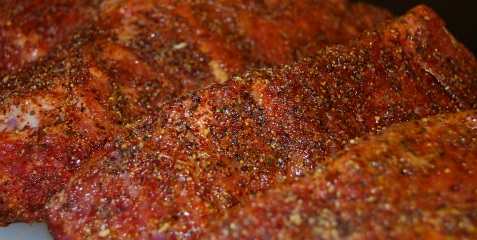 Taste refers to the five basic receptors: sweet, salty, sour, bitter and umami (the one we didn’t learn about in school). Flavor is a combination of taste plus the other sensations that influence our perception of food, such as aroma, texture, juiciness, mouth-feel and color.
Taste refers to the five basic receptors: sweet, salty, sour, bitter and umami (the one we didn’t learn about in school). Flavor is a combination of taste plus the other sensations that influence our perception of food, such as aroma, texture, juiciness, mouth-feel and color.
The small protein compounds that trigger our umami receptors come from many sources. Meaty, savory umami flavors instantly bring to mind a great steak, but fruits and vegetables also contain these same proteins.
BeefFoodService.com
A beef rub is different than a pork rub. Most pork rubs are built to add or accentuate the sweetness of pork. Beef rubs seek to
build on the bold and savory taste of beef. As we learned with the Tried and True Texas Brisket a
simple rub of salt and pepper works great with beef. This rub will take it one step further and uses bolder, more robust flavor pairings to bring out the
savory-ness in your beef.
The "umami" taste is found in naturally occurring compounds: glutamic acid, glutamates, and nucleotides. Beef happens to contain all three. It's no accident that beef is commonly paired with other umami sources such as bacon, mushrooms, bell peppers, etc. Combinations like this provide absolutely savory and delicious flavors. Alright, schools out - long story short this beef rub benefits from the same type of pairings that will tantalize your taste buds!
This is my favorite dry rub for boneless beef chuck ribs (but it will work great with a brisket, short ribs or any cut of beef).
Combine all ingredients and mix with a whisk to break up the ingredients. The rub will store for months in a tightly sealed jar or zip-loc bag. Just run a whisk through it to break up any chunks.
Tip: You can generously apply a pourable yellow mustard (French's) to the beef before the rub to help it stick to the cut of meat. The mustard pack will cook off leaving only the spices.